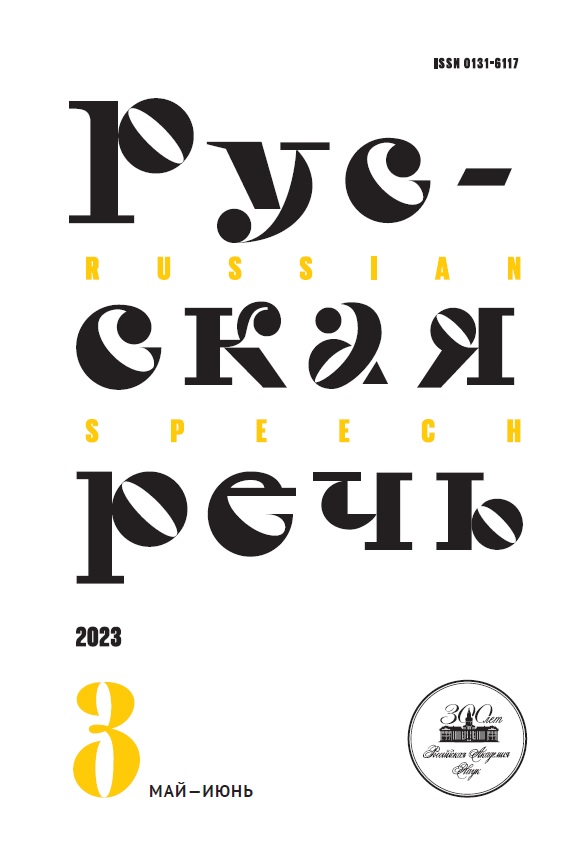Transmutation as a Tool of Dramatic Text Interpretation
- Authors: Chureyeva O.A.1
-
Affiliations:
- V. I. Vernadsky Crimean Federal University
- Issue: No 3 (2023)
- Pages: 117-127
- Section: Articles
- URL: https://jdigitaldiagnostics.com/0131-6117/article/view/652372
- DOI: https://doi.org/10.31857/S013161170026405-4
- ID: 652372
Full Text
Abstract
This paper studies the impact of transcoding on the text interpretation. The study, based on the text material of Chekhov’s play “The Seagull”, offers reflections on challenges of transmutation process. The paper analyzes the interaction between verbal and non-verbal signs as codes of different nature. It is pointed out, that modes of code switching could fit into several focal algorithms of transformation: a substitution (a verbal sign replaces with non-verbal one), accompanying (a verbal sign is accompanied by a non-verbal one), addition (a verbal sign is supplemented by a non-verbal one). The research shows that a various theatrical signs (acoustic, visual, olfactory, kinetic, proxemic, involving light or color, etc.) actualize, clarify, enhance or neutralize the meaning of verbal utterances. They can be embedded in the theatrical text structure simultaneously or sequentially. The study is also concerned with the problem of translatability of signs. The article suggests that an adequate translation, which has the same effect on the recipient as the original text, provides a potential opportunity for the reverse translation of non-verbal signs into verbal ones, since the transcoding process is reversible. It is emphasized that transmutation allows us to interpret the text of a dramatic work, taking into account not only linguistic, but also extralinguistic reality. The author sets out to prove that the adequate intersemiotic translation can be obtained in case the functional sign equivalence is maintained.
Full Text
References
- Чехов А. П. Избранное. М.: ЭКСМО-Пресс, 1998. C. 100–151.
- Эко У. Сказать почти то же самое. Опыты о переводе. М.: АСТ: Corpus, 2015. 736 с.
- Якобсон Р. О. О лингвистических аспектах перевода. М., 1978. С. 16–24.
- Якобсон Р. О. Язык и бессознательное. М.: Гнозис, 1996. С. 248.
- Calabrese O. Lo strano caso dell’equivalenza imperfetta (modeste osservazioni sulla traduzione intersemiotica // Versus. 2000, № 85–87. P 101–120.
- Dusi N. Intersemiotic translation: Theories, problems, analysis // Semiotica. De Gruyter Mouton, 2015. P. 181–205.
- Greimas A. J. Figurative semiotics and the semiotics of the plastic arts // New Literary History. 1989. № 20 (3). P. 627–649.
- Kenny D. Equivalence // Routledge encyclopedia of translation studies. Routledge, 2009. P. 96–99.
- Pierce C. S. Collected papers. Vol. IV. Cambridge, Mass.: Harvard University Press, 1931–1958. 588 p.
- Rey-Debove J. Lexique sémiotique. Paris, PUF, 1979. 156 p.









